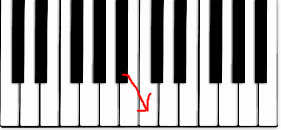[1] Therefore, any claim or attempt to apply it to "all CDs", or "all SACDs", or "all stereo systems" is impossible.
[2] The error lies on the part of anyone attempting to use their results to support a general claim that "adding the CD quality signal loop would be inaudible in other circumstances, with other test samples, or with other listening systems".
[3] Also note that, as usual, you didn't read what I wrote (or you have some difficulty with grammar).
[4] I DID NOT SAY THAT AN INTER-CHANNEL PHASE DIFFERENCE EXISTS WITH THE CD RECORDING PROCESS IN GENERAL. In fact, I agree with you that it does not.
[4a] However, it's not impossible that that such a difference might be introduced by a simple flaw in their test equipment, or by a poorly written sample rate converter, or even by some weird error in the specific SACDs they chose to use.
[4b] I merely pointed out that, IF such an issue existed, for whatever reason, it would be audible
1. No one, NOT me and NOT the authors, have claimed it applies to "all SACDs" or "all stereo systems" and incidentally you've missed a variable: "All listeners". It is clearly impossible to test all SACDs, all stereo systems and all listeners, I've ALREADY posted the quote from Meyer and Moran explicitly stating this and I even bolded it so you wouldn't (inadvertently) miss it. The ONLY person stating that this study "claims to apply it to all CDs, SACDs and all stereo systems" is YOU. Therefore, YOU are effectively arguing with YOURSELF!!
2. No, that is NOT the error, there is no error, the test results DO "
support a general claim that adding a CD loop would be inaudible in other circumstances". However that is all they do, the results of the test ONLY provide
supporting evidence for the claim, NOT proof.
3.
Oh the irony! YOU didn't read what I wrote, you didn't read (or misinterpreted, mis-assumed and misrepresented) what YOU quoted and you apparently didn't even read what YOU, yourself wrote. You quoted Mayer and Moran but then misrepresented what they actually stated and then spent pages arguing that (your misrepresentation) of their claim was erroneous. And, YOU stated that their test results represented "
reasonably compelling evidence" but since then you've effectively been arguing that it's not valid evidence at all, because they didn't document every detail (regardless of relevance)??
4. The recording process (whether CD, SACD or anything else) ALWAYS contains an inter-channel phase difference! As two microphones (mic capsules) cannot occupy the same position in time and space, there will always be an inter-channel phase difference and it will ALWAYS be substantially more than 10 micro-secs (sometimes as much as several milli-secs). What doesn't introduce any inter-channel phase differences is the digitisation (and reconstruction) process, regardless of whether it's CD or SACD.
4a. It's not impossible, pretty much nothing is absolutely impossible but it's exceedingly unlikely. I'm not aware of any DAC chips which suffer from this error and as the analogue signal (electricity) is travelling at about a third the speed of light, cables and other equipment in the chain would have to be very seriously different in length to introduce 10 micro-secs of inter-channel delay. However, such a delay from a listener's perspective would always exist, unless they were positioned precisely between the speakers to an accuracy of greater than 3.43mm and they never move from that position.
4b. But what you "merely pointed out" was incorrect. 10 micro-secs of inter-channel delay is ONLY audible under specific conditions, conditions which did NOT exist in any of their sample SACDs (or any other commercial music SACDs). Again, your premise if false, all tests have a limited scope. They did not bolt the test subjects' heads in precisely the correct position (and neither do audiophiles or anyone else when listening to music), they did not measure or document humidity, temperature or air pressure, they did not measure or document the magnetic field strength of the Earth or gravitational waves or solar activity at their test locations, nor other variables which could "possibly" affect the signal. Not even the most rigorous of scientific tests can eliminate everything that "might possibly" affect the test, hence why they must always have a limited scope.
But I DID SAY INTER-CHANNEL PHASE DIFFERENCE CAN EXIST WITH THE CD (PCM) RECORDING PROCESS IN GENERAL. Period.
And I stand by this claim and I will, beyond any shadow of a doubt, present more than enough solid evidence that it can happen ... DSD is INHERENTLY free from inter-channel phase difference happening.
DSD is inherently free from inter-channel phase differences occurring, exactly the same as CD. Please present your "solid evidence" to the contrary!
Thank you for the correction. I was mistaken about the 15kHz cutout on all videos.
15kHz was the standard upper limit for analogue video and analogue TV broadcast for many decades and even carried through well into the '90's when much/most of the chain was digital. It's only really with fully digital systems and HDTV where the 15kHz cut-off was dropped. This is maybe where your confusion originated?
G

























